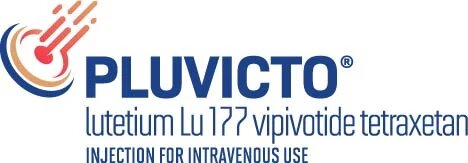Patient Support Line 1-844-638-7222, Monday-Friday, 8:00 AM – 8:00 PM ET, excluding holidays.

How PLUVICTO
May Help
Select the link below that best describes the treatment you’ve received so far.
PLUVICTO may give you more time without cancer worsening
*Additional analysis conducted to learn more about rPFS in PLUVICTO patients.
The PSMAfore clinical trial measured rPFS. Median rPFS is the time when half of the men in the study were still alive without their cancer spreading or getting worse.
In the trial, PLUVICTO was studied in men previously treated with hormone therapy. PSMAfore included 468 men with PSMA+ prostate cancer that spread outside their prostate. They were divided into 2 groups:
234 men were treated with PLUVICTO
PLUVICTO was given once every 6 weeks for up to 6 treatments
234 men were treated with a second hormone therapy
Overall Survival (OS)
Median OS was higher in patients who had PLUVICTO (24.5 months) compared to patients on a second hormone therapy (23.1 months). These results were not statistically significant.
With PLUVICTO, more men had a tumor response
ORR is calculated by adding Complete Response (CR) and Partial Response (PR), which was:
CR: 21% with PLUVICTO vs 2.8% with a second hormone therapy
PR: 28% with PLUVICTO vs 11% with a second hormone therapy
†Measuring ORR was not the main goal of the PSMAfore trial. It was not statistically significant. It does not impact the results for rPFS.
PSA Response
If PSA was 100 ng/mL before the clinical trial, then PSMAfore would measure the PSA level if it dropped to 50 ng/mL or lower.
‡Measuring PSA response was not the main goal of the PSMAfore trial. It was not statistically significant. It does not impact the results for rPFS.
PSMA+, prostate-specific membrane antigen positive.
PLUVICTO may help you live longer
The VISION clinical trial measured OS. Median OS is the length of time half of the men in the study were still alive.
Results have been rounded from 15.3 to 15 months and 11.3 to 11 months.
In the VISION trial, PLUVICTO was studied in men previously treated with hormone therapy and chemotherapy. VISION included 831 men with PSMA+ prostate cancer that spread outside their prostate. They were divided into two groups:
551 men were treated with PLUVICTO plus standard therapy*
PLUVICTO was given once every 6 weeks for up to 6 treatments
280 men were treated with standard therapy alone
*Standard therapy was chosen by a doctor from among existing approved treatments and did not include chemotherapy, immunotherapy, systemic isotopes like radium-223 (223Ra), or drugs still being studied.
More time without cancer worsening
The VISION clinical trial measured rPFS. Median rPFS is the time when half of the men in the study were still alive without their cancer spreading or getting worse.†
Results have been rounded from 8.7 to 9 months and 3.4 to 3.5 months.
†rPFS results may be misread. In the clinical trial, many patients treated with standard therapy alone dropped out early.
Tumors are more likely to shrink with PLUVICTO (ORR)
The VISION trial measured ORR, which measures the impact of PLUVICTO on tumors. It includes Complete Response (CR) and Partial Response (PR).
CR: 9% with PLUVICTO vs 0% with standard therapy
PR: 40% with PLUVICTO vs 1.6% with standard therapy
PSA Response
If PSA was 100 ng/mL before the clinical trial, then VISION would measure the PSA level if it dropped to 50 ng/mL or lower.
‡Measuring PSA response was not the main goal of the VISION trial. It was not statistically significant. It does not impact the results for OS or rPFS.
